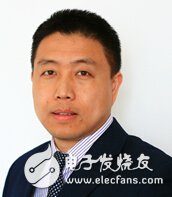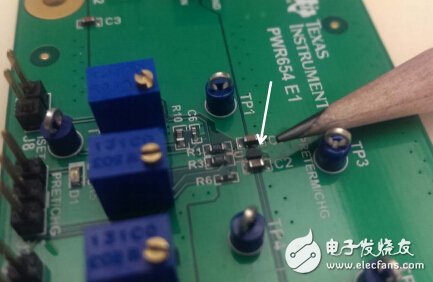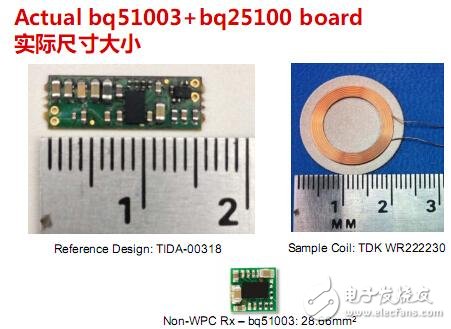In 2014, wearable devices became the new favorite of consumers, indicating that another advanced consumer electronics product is gaining popularity, perhaps from the eye-catching Apple Watch released by Apple. However, we clearly see that the battery life of wearable devices is still unsatisfactory, and solving the problem of battery life may actually promote the heat of wearable devices.
We know that the upstream and downstream industry technologies of wearable devices involve sensors, memory, batteries, touch modules, voice interaction technology, and somatosensory related products. Among them, the most influential experience is power consumption. I think Who wouldn’t want to charge their smart watches every day? Therefore, we believe that ultra-low power technology, energy harvesting technology, wireless charging technology will be the three major elements.

Dr. Wen Sihua, Battery and Product Marketing Manager, High Performance Analog Semiconductor Products Division, Texas Instruments, also believes that power consumption and battery life are factors that hinder the development of the wearable device market. In the future, these areas will continue to be the focus of innovation.
Given the long battery life is a key design factor for most wearable devices, power management technology is the highest "survival rule" for achieving low power consumption. TI's industry's smallest, lowest power linear battery charger and fully integrated miniature DC/DC power supply module with quiescent current consumption of only 360nA helps extend wearable electronics, remote sensors and MSP430TM microcontroller applications Battery life, enabling innovative power management for ultra-low power designs.
According to Dr. Wen Sihua, the bp25100 single-cell lithium-ion battery charger is available in a 0.9mm & TImes; 1.6mm WCSP package to support a charger solution that is only half the size. The bp25100 supports input voltages up to 30V, enabling accurate control of fast charge currents as low as 10mA or up to 250mA, while also enabling charge terminations as low as 1mA, supporting micro lithium-ion button cells. In addition, the bq25100 supports leakage currents of less than 75nA to extend standby run time.

Dr. Wen Sihua said, "This is the industry's smallest and lowest power linear charger." The actual size of the bp25100 is even smaller than that of passive components, and it has a very good application prospect in wearable devices.
And TI is also working on energy harvesting technology. Power harvesters and buck converters efficiently extract and manage the power generated from a wide range of energy sources, such as light sources, heat sources, electromagnetic and vibrational energy, from microwatt (μW) management to milli Watt (mW). For example, the BQ25504 is a new integrated nano-energy energy collection power management solution. Its low quiescent current, high conversion power, flexibility to connect various energy sources and energy storage components make IC stand out in the market, it is very suitable for special Ultra-low power applications such as smart bracelets are needed.
In order to solve the battery life problem of wearable devices, wireless charging function can also be added. For wireless charging TI, there is also an advanced solution. On the same circuit board, the qq standard bq51003 2.5W wireless charging will be performed on the same circuit board. The receiver is paired with the bq25100 linear charger. Both devices feature the latest TI Design reference boards measuring 75 square millimeters. TI has been supporting Humavox to integrate the bq25100 into its wireless charging solution for wearable devices and portable healthcare devices that use the Humavox ETERNATM RF wireless charging platform.

"Batteries for wearable devices are currently unable to achieve fast charging in a strict sense. First, high-density problems must be solved. However, wireless charging can charge most of the power in one hour, for example, 80%, which satisfies the demand for fast charging to some extent. Dr. Wen Sihua said.
At the same time, Dr. Wen Sihua emphasized that wireless charging is still a long-term application on wearable devices due to cost constraints, and wireless charging is not necessarily a major selling point on some low-end smart bracelets.
In addition to power consumption, size is also a very important consideration in wearable devices. Dr. Wen Sihua said that power modules in the MicroSiP package can integrate more devices in the smallest board space, making innovation for wearable devices. Industrial design offers more ideas. For example, the TPS82740A and TPS82740B step-down converter modules integrate a switching regulator, inductor, and input-output capacitors in a fully integrated 9-bump MicroSiP package to achieve a solution size of only 6.7 square millimeters. Therefore, MicroSip is a very good technology. The product can be integrated from the package level. The key is not to occupy the space of the PCB. From the perspective of overall design, the MicroSip module is small and suitable for application in wearable devices. This packaging technology is a breakthrough.
In the field of wearables, the bq25100 charger and associated MicroSiP power modules further expand TI's ultra-low-power battery management and DC/DC converter portfolio, which not only helps extend battery life, but also integrates wireless charging Features that make wearable devices battery-free in low-power designs. It can be said that TI's ultra-low power technology, energy harvesting technology, and wireless charging technology provide more imagination for the continued popularity of wearable devices.
Our comprehensive line of magnetic buzzers and Piezo buzzers are used across many major industries as a means for audible identification or alert. From extremely compact 4 mm SMT buzzers to larger, high decibel models, this product family of audio indicators, audio transducers, piezo elements, and sirens is well suited to address the requirements of the most challenging applications. Backed by a suite of online tools, accessibility to stock, and a range of customization capabilities, you can trust your unique audio alert needs with us.
Door Buzzer,Buzzer Alarm,Electric Buzzer,Buzzer Button
NINGBO SANCO ELECTRONICS CO., LTD. , https://www.sancobuzzer.com